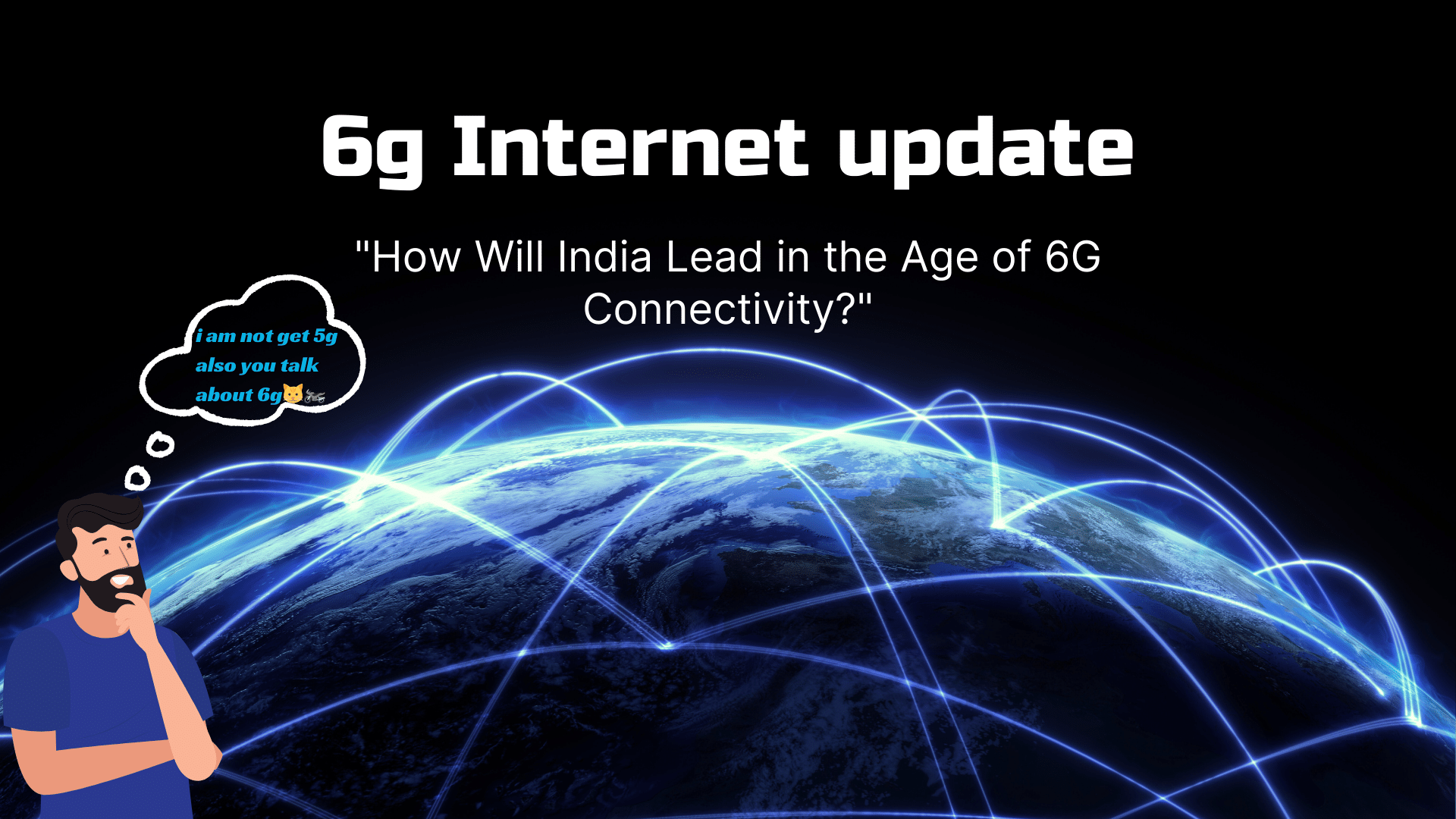Introduction:
India is on the fast track to the 6G Internet, aiming for a future of lightning-fast connectivity and groundbreaking communication technologies. This evolution goes beyond speed, presenting a transformative landscape in technology and communication that’s both exciting and challenging.
Imagine a world where you can download a full-length movie in seconds, stream high-quality virtual reality games, and control your smart devices with your mind. This is the world of 6G internet, the next frontier of wireless communication. 6G internet is not just an upgrade from 5G, but a revolutionary leap that will transform the way we interact with technology and each other. This 6G internet will offer blazing-fast speeds of up to 1 terabit per second, ultra-low latency of less than 0.1 milliseconds, and massive connectivity of up to 10 trillion devices. 6G internet will also enable new applications and services that will enhance our lives, such as holographic communication, telemedicine, smart cities, and artificial intelligence. 6G internet is the future of communication, and it is closer than you think.
Advantages of 6G Technology:

- Environmental Impact: 6G could boost energy efficiency, making networks and devices more sustainable and eco-friendly, contributing to a greener future.
- Innovation and Job Opportunities: The shift to 6G could create new jobs and innovative avenues, sparking economic growth and fostering creativity.
Challenges of 6G Technology:
- Regulatory Hurdles: Adapting regulations to accommodate the fast pace of 6G advancements poses a regulatory challenge.
- Rural Connectivity: Extending 6G networks to remote areas remains a substantial challenge, ensuring equitable access for all.
Security and Privacy Concerns:
- Cybersecurity Enhancements: Strengthening cybersecurity measures becomes imperative in an interconnected network of billions of devices.
- Privacy in an Interconnected World: Safeguarding individual privacy amidst increased connectivity and data sharing requires careful consideration.
Infrastructure and Deployment Challenges:
- Investment and Resource Allocation: Developing the necessary infrastructure demands significant investment and efficient resource management.
- Technological and Logistical Hurdles: Deploying 6G networks across diverse terrains involves overcoming logistical and technological obstacles.
Balancing Global Collaboration and Leadership:
- Cooperation with Global Partners: Balancing collaboration with international entities while maintaining a leading position in 6G requires finesse.
- Intellectual Property Rights: Acquiring patents is essential, but ensuring ethical use without stifling innovation poses its own challenge.
Socio-Economic Impact:
- Digital Inclusion: 6G technology, if implemented effectively, could bridge the digital divide, ensuring that even remote and underserved communities have access to high-speed connectivity, fostering social inclusion.
- Economic Boost: The advent of 6G could catalyze economic growth through enhanced productivity, new job opportunities, and innovative business models across various sectors, thereby contributing to the country’s overall economic prosperity.
Education and Healthcare Advancements:
- Enhanced Education: 6G can revolutionize education by facilitating advanced learning methodologies through immersive experiences, remote learning, and virtual collaboration, transforming the way students and educators interact and share knowledge.
- Telemedicine and Healthcare: The technology can enable superior healthcare services through remote surgeries, real-time patient monitoring, and prompt medical consultations, ensuring better healthcare accessibility, especially in rural or inaccessible areas.
Global Connectivity and Collaboration:
- Global Influence: As India strives to be a significant player in the 6G landscape, its contributions could shape international standards, technologies, and global connectivity, enabling it to wield influence and collaborate on a global stage.
- Challenges of International Integration: While aiming for a leadership position, aligning with global standards, regulatory frameworks, and technological integration presents challenges in maintaining a balance between national development and global collaboration.
Sustainability and Environmental Considerations:
- Green Technologies: As technology evolves, integrating environmentally friendly practices becomes essential, ensuring that 6G development aligns with sustainable and eco-friendly principles, thereby reducing the carbon footprint of digital advancements.
- E-waste Management: The growth in device connectivity might lead to increased electronic waste. Effectively managing the disposal and recycling of obsolete devices becomes imperative to mitigate environmental concerns.
India’s 6G initiative:

Under India’s 6G initiative, the country is ambitiously propelling itself into the realm of the next wireless communication era. Aimed at developing and deploying advanced 6G networks by 2030, this initiative is strategically guided by key components.
Unified Approach with the Apex Council: To steer this momentous project, India has established an apex council. This council focuses on crucial elements such as standardization, spectrum allocation, ecosystem development, and financial structuring, ensuring a comprehensive and streamlined approach to adopting 6G technology.
Collaborative Research and Innovations: At its Chennai R&D Center, India has formed a dedicated 6G research team. Collaborating with Ericsson’s global research teams, this partnership aims to innovate novel solutions for the future of telecommunications. This collaborative synergy positions India at the forefront of technological advancements.
Visionary Use Cases and Challenges: India’s vision document for 6G envisions a spectrum of potential use cases and corresponding challenges. Ranging from concepts like remote-controlled factories, self-driven cars, smart wearables, to a strong focus on sustainability, these use cases are anticipated to usher in new opportunities for innovation, growth, and social impact.
Global Leadership in 6G Technology: With a keen eye on global leadership, India has already amassed 100 patents for 6G technology. This proactive accumulation of patents signifies India’s strong commitment to leading the charge in the evolution of 6G technology.
Embarking on a Defined Path: India’s journey into the 6G landscape commences with strong ambition and a meticulously planned roadmap. This foray marks a significant step not just towards enhanced connectivity but into a future teeming with innovation and transformative technology.




